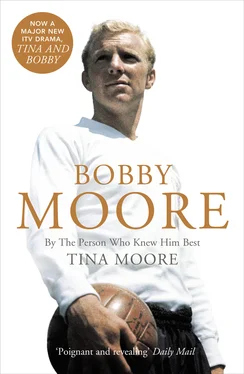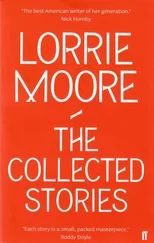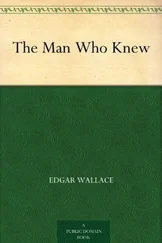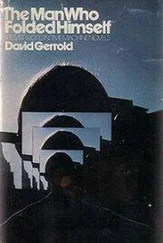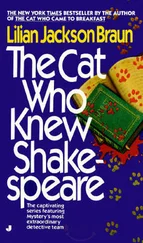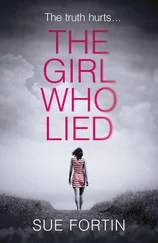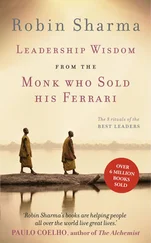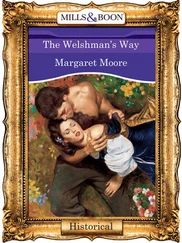The thirtieth of July 1966 must be a date branded on every English person’s memory for all time. Even people who weren’t born then know about the day we won the World Cup. It’s part of British history. It was a unique occasion. Even if we won it again (wouldn’t it be great?), the boys of summer 1966 will always have a special place in everyone’s hearts. They were the first.
When I think back on that time, the sun always seems to be shining in my mind’s eye, although in fact it rained on the afternoon of the Final. It must be something to do with the era in which it took place. The Boys of ‘66 were part of the fabric of the Sixties: Swinging London, the Harold Wilson government, student protests, flower power, the Beatles and the Stones, white boots and mini-skirts, Biba and Mary Quant. It was a gorgeous, glorious time when the whole of Britain seemed youthful, successful and optimistic.
As Judith Hurst and I were driven in an England bus with the rest of the wives past the throngs of people in Wembley Way that day, we felt so proud and full of expectation. And the first people we saw when we took our seats were Terence Stamp and Jean Shrimpton, who was probably the face of the Sixties. She looked so glamorous, absolutely stunning. I had done a little modelling for a couple of catalogues but I just wasn’t in her orbit. She was the real thing. I couldn’t take my eyes off her. She just stood out.
The build-up to the Final had been overwhelming. Wherever you went, it was all anyone talked about, but I could still hardly believe what was happening to us. Yes, it was a time when the class system was breaking down and people from ordinary backgrounds like us were beginning to become cultural icons. And yes, Bobby had already become football’s first pin-up - Terry O’Neill’s photo of him, surrounded by models, had appeared in an edition of Vogue in 1962. Not only that - he had just graced the fashion pages of the Daily Express, kicking a ball in a Hardy Amies suit. But this was something else again. Before the World Cup, I’d been able for the most part to go about with my family in anonymity. But in those weeks leading up to the Final I had my first taste of what it meant to be a celebrity, just for being married to a footballer.
I was being recognized in Bond Street. Shops would loan me designer clothes. Alfie Isaacs, a huge West Ham fan who owned an upmarket dress shop, gave me the outfit I wore on Final night - yellow silk chiffon with a flared skirt and a beaded top that I teamed with a tourmaline mink stole. Alfie had arranged for the photographers to be there when I tried it on and they followed me as I skipped up the road on a shopping spree. I caught sight of Alfie peering anxiously at me from round the corner, worrying that his ensemble was going to be upstaged.
Taxi drivers wouldn’t charge fares. I discovered I could ring up a restaurant and say, ‘Tina Moore here, can I have a table?’ and the answer was never ‘No’. Ford gave us a white Escort, although as it had World Cup Willie, a cartoon character, on the side, it wasn’t the kind of vehicle you went anywhere in if you were trying to cultivate an impression of dignity. But let’s be honest, we were having the time of our lives. Loads of doors opened for us because of Bobby’s fame. I realized we were of value. A lot of it was hype and nonsense and I hadn’t expected it, but it was great.
The point I’m making is that suddenly, for the first time ever, the game wasn’t just something stuck at the back of the newspapers. Football had married fashion and now it was feature page material as well. In March that year, Terry O’Neill had taken some fabulous shots of Bobby and me, including one of me leaning against a tree in Epping Forest, wearing thigh-high boots and an England shirt as a mini-dress, while Bobby knelt at my feet wearing drainpipes and a black polo-neck. If we hadn’t known it before, we knew it then - we were Bobby and Tina, the First Couple of football.
My picture also found its way into the Sun, where it formed part of a collection called ‘Ten of the Best-Looking Women in England’, probably because someone thought I looked a bit like Joyce Hopkirk; we both had long, blonde hair. There the similarity ended: she was the editor of Cosmo magazine and one of the most powerful, glamorous women in Fleet Street, while I was a Gants Hill housewife. And I hasten to say that it was a terrifically flattering photo of me - when I first saw it, I thought, ‘Oh, she looks good’ and carried on turning the pages. I hadn’t recognized myself.
Don’t get me wrong. I wasn’t some new, unique star in the firmament - Tina Moore, footballer’s wife extraordinaire. It wasn’t just me on whom the press were focussing. All the players’ families found themselves to be of intense media interest. Martin Peters, Geoff Hurst and Bobby, the three West Ham players in the England side, all lived close by each other in suburban Essex and there were photoshoots in our back gardens, with toddlers crawling around our feet. Pictures of the girls of 1966 appeared in The Sunday Times - elegant Norma Charlton, pretty, coltish Lesley Ball, the lovely, warm Judith Hurst and tall, dark-haired Kathy Peters, looking haughty and Vogue- ish in her miniskirt. In actual fact, the real-life Kathy was one of the least haughty people you could ever meet. She had the most tremendous sense of fun. That girl was a real laugh.
I suppose, in a way, we were the prototype Footballers’ Wives, but rather than being singers and models and celebrities in our own right, we were ordinary girls from ordinary backgrounds who only surfaced in the glare of publicity because we were married to the players. There was no pretentiousness or ostentation. Nobody was trying to cut anyone else out. There wasn’t a big hairdo amongst us and we would have died rather than do anything that led to accusations of being flighty.
Really, we were girls of our time. We’d been brought up to respect our elders and betters and we certainly weren’t swept away by our own importance. Set foot on the pitch or in the boardroom? We’d never have dared. At matches, the wives and girlfriends were always contained in a separate tea room, so if any of us harboured delusions of grandeur we soon got the message - we were of no consequence whatsoever!
For instance, on the evening of the World Cup Final there was a celebration dinner at the Royal Garden Hotel in Kensington High Street. Everyone was there: players and officials of the four semi-finalists, the World Cup organizing committee, the upper ranks of the Football Association. Everyone but the wives. The banquet was stag. In that era, not one of us found that at all remarkable and if Alf Ramsey said, ‘No wives’, then that was how it had to be. There was a wide gulf between managers and players in those days and not one of them would have questioned his decision. In our day we always did what we were told to do.
So we wives were herded into the Bulldog Chophouse in another part of the hotel. The only women allowed into the banquet were the official photographer, Sally Lombard, and her two assistants. One was Estelle Lombard, Sally’s niece. The other was Betty Wilde - who just happened to be my mother.
The explanation? Sally Lombard’s company, Jalmar, held the photographic concession at all the top London hotels. My mother was no photographer, but she and Sally were great, great friends. They went way back. As soon as it looked as if England would make the Final, the two of them hatched the idea between them. My mother kept it a tightly-guarded secret and Bobby and I were both astonished when she told us. What a coup! I wasn’t jealous - far from it. I thought my mother was brilliant to have got herself in.
Читать дальше
